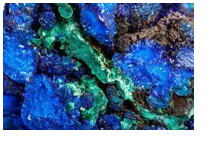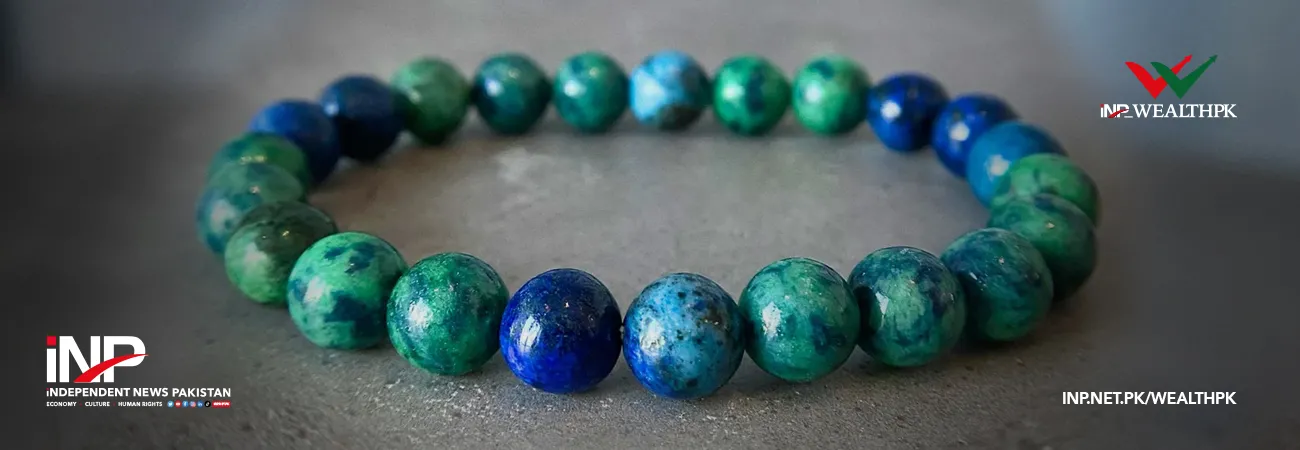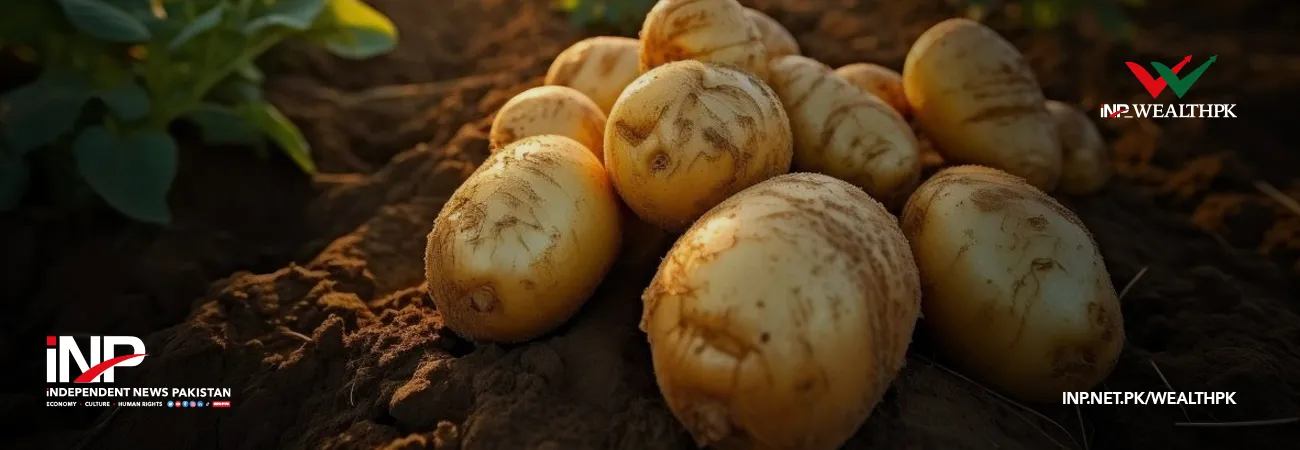INP-WealthPk
Faiza Tehseen
Pakistan has large deposits of azurite – a source of copper and other valuable minerals – needing a proper framework for its mining and processing, Muhammad Yaqub, Shah, principal geologist in Islamabad-based Global Mining Company, told WealthPK.

He said the Kohistan Island Arc (KIA) in Khyber Pakhtunkhwa province was rich in the mineral. It is formed by the exposure of a complete section of the oceanic crust and the seafloor sedimentary rocks. KIA is a unique juncture of suture zone, continent-continent collision, regional tectonics, mantle crust evolution, and subduction/obduction of oceanic crust. Copper, gold, silver, and a variety of other ore mineralization is a common phenomenon that normally occurs along the suture zone among hydrothermally altered zones, placers, massive sulfide deposits, and disseminated local veinlets. "In KIA, azurite-bearing felsic rocks are widely exposed. They are entirely different but apparently like the granitic rocks (famous as K2nite). The textural feature of azurite-bearing felsic rocks comprises 80% quartz and plagioclase fine-grained texture without any traces of alkaline feldspar, micas, plagioclase, or quartz. There is only the need to prepare a proper mining plan to turn these deposits into productivity, "said Yaqub, also former general manager of the Pakistan Mineral Development Corporation (PMDC).
Discussing the existence of azurite in Balochistan, Abdul Bashir, Chief Geologist of Koh-e-Daleel Minerals Company (Pvt) Ltd, said deposits of azurite were not limited to a specific area. Geologically, wherever the igneous activity has taken place, azurite occurs – the entire Chagai magnetic arc, in Ras Koh Mountain range where the igneous activity took place at a great level, and the areas located along the axial belt. Azurite is a copper mineral, principally associated with malachite or copper carbonate usually hosted by volcanic rocks. For the formation of azurite, oxygen, carbon dioxide, and water are essential to inert with copper-bearing minerals. Correlated with azurite, bornite is another copper-rich ore. The difference is that azurite forms in the oxidized copper zones existing near the surface, while bornite happens in the sulfide zone underneath, usually at a depth of 15 to 30 meters. When altered, it turns to azurite. So, the presence of each indicates the existence of the other. The other associated minerals of azurite are smithsonite, antlerite, chrysocolla, brochantite, cerussite, cuprite, dolomite, and calcite. It is to be remembered that smithsonite, dolomite, and calcite are carbonate minerals; antlerite, cerussite, and brochantite are sulfate minerals; cuprite is an oxide mineral, while chrysocolla is a silicate mineral, usually limited to alkaline dry environments. Azurite may take different forms – in response to air, azurite gradually turns into malachite.
In other words, both malachite and azurite grow together in nodules. Non-metallic azurite is perfect in cleavage and brittle in tenacity but sensitive to heat. It is considered a soft mineral, ranked between 3.5 to 4 on the Mohs' scale of hardness with an exceptional gravity of 3.7 to 3.9. "All the said factors make the faceting of azurite well worth but rare and challenging. Its color may fade due to extreme exposure of azurite to heat, light, and air. Owing to its association with copper and malachite, azurite presents a variety of vivid blue shades. "Azurite and its associated minerals must be seriously considered for mining and processing. It is important for the local industry. Their value-added products can be exported to earn foreign exchange," opined Abdul Bashir. Azurite is used as an ornamental stone, in making beads, to adorn jewelry, as a fabric dye, as a pigment for paints, for landscaping projects, for countertops and flooring. Heavily influenced by the quantum effects, azurite is well considered as an extraordinary magnet. Azurite granite is also known as "raindrop azurite." The policymakers must consider the value of all precious minerals, including azurite, to strengthen the mining sector.
INP: Credit: INP-WealthPk










